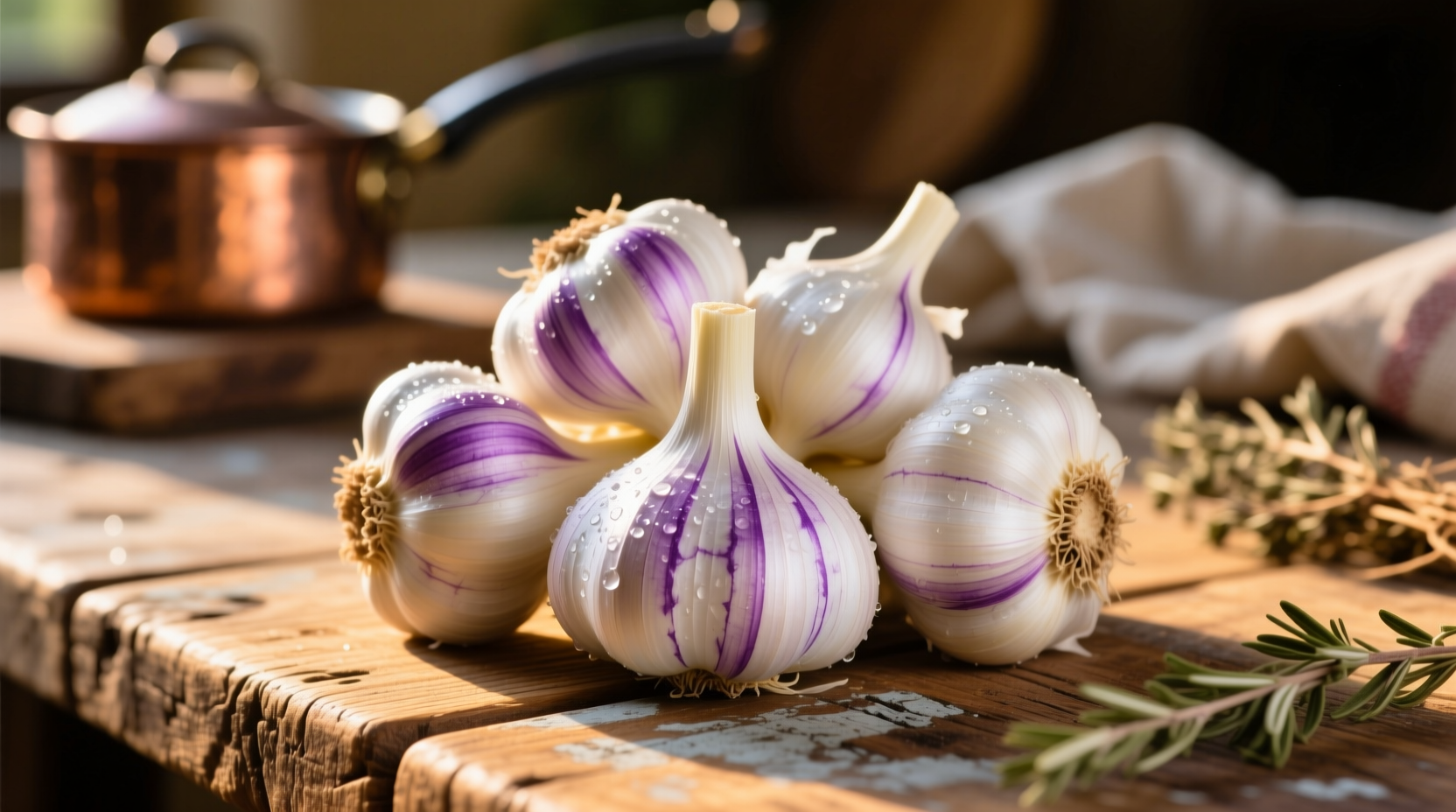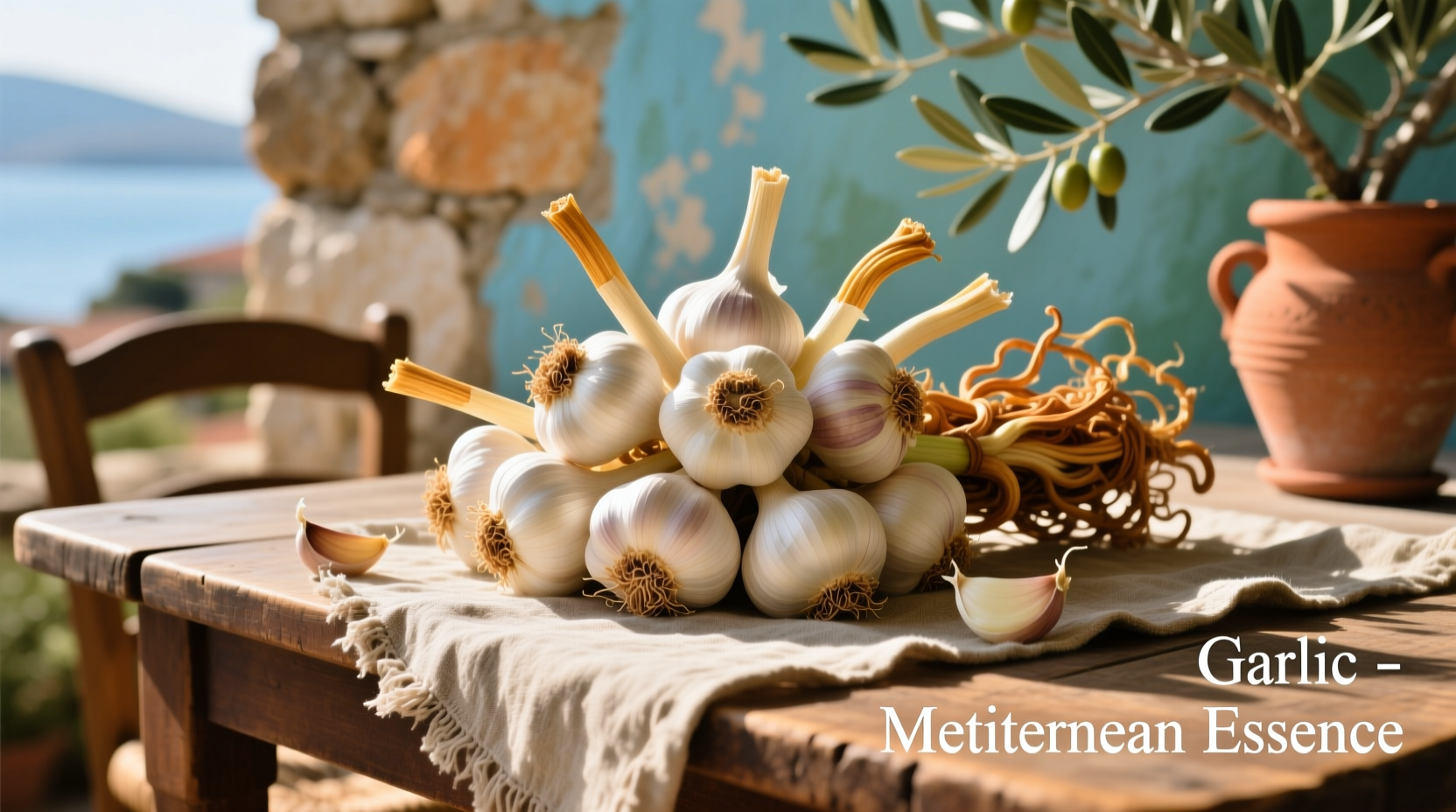Discover why Mediterranean garlic transforms ordinary dishes into extraordinary culinary experiences. This comprehensive guide reveals the historical significance, regional variations, and practical applications that make Mediterranean garlic indispensable in kitchens worldwide. You'll learn how to select, store, and use authentic Mediterranean garlic varieties to elevate your cooking while gaining scientifically-backed insights into its remarkable health properties.
The Historical Journey of Garlic Across Mediterranean Civilizations
Garlic's presence in Mediterranean cultures spans millennia, with archaeological evidence confirming its cultivation since 3,000 BCE. Ancient Egyptians considered garlic sacred, providing it to laborers building the pyramids for strength and endurance. Greek athletes consumed garlic before competitions, while Roman soldiers carried it into battle for courage. This historical trajectory demonstrates garlic's transition from medicinal herb to culinary cornerstone.
Egyptian tomb paintings depict garlic cultivation; used as currency and medicine
Greek physician Hippocrates prescribes garlic for respiratory ailments and fatigue
Roman agricultural text De Agri Cultura details garlic cultivation techniques
Mediterranean garlic varieties spread globally through exploration and trade
Regional Garlic Varieties and Their Distinctive Characteristics
Mediterranean regions have developed unique garlic varieties adapted to local climates and culinary traditions. Unlike the uniform supermarket garlic, these regional specialties offer diverse flavor profiles ranging from sweet and mild to intensely pungent. Understanding these differences helps recreate authentic regional dishes and select the perfect variety for specific cooking applications.
| Region | Variety | Flavor Profile | Best Culinary Uses |
|---|---|---|---|
| Spain | Ajo Morado (Purple) | Complex, slightly sweet with floral notes | Raw applications, aioli, roasted dishes |
| Italy | Aglio Rosso di Nubia | Intense, robust with lingering heat | Pasta sauces, meat dishes, preserved in oil |
| Greece | Skirto (Crete) | Mild, nutty with subtle earthiness | Tzatziki, grilled vegetables, olive oil infusions |
| France | Ail Rose de Lautrec | Delicate, aromatic with minimal aftertaste | Salad dressings, fish preparations, delicate sauces |
According to research from the Oldways Preservation Trust, these regional varieties contain up to 30% more allicin—the compound responsible for garlic's health benefits—than commercially grown alternatives. The National Center for Complementary and Integrative Health confirms that proper preparation methods significantly impact garlic's therapeutic properties.
Practical Applications: Transforming Your Cooking with Mediterranean Techniques
Mastering Mediterranean garlic techniques elevates your cooking beyond simple ingredient substitution. The timing, preparation method, and quantity dramatically affect flavor development. Unlike commercial recipes that treat garlic as a background note, Mediterranean cuisine showcases garlic as a featured ingredient with intentional preparation.
Essential preparation techniques:
- Raw application: Finely mince or crush garlic and let it rest for 10 minutes before use to maximize allicin development
- Low-temperature infusion: Gently heat garlic in olive oil below smoking point (250°F/120°C) to extract flavors without bitterness
- Whole roasting: Roast unpeeled bulbs at 375°F (190°C) for 40 minutes to create sweet, caramelized cloves
- Preservation methods: Traditional Mediterranean preservation in olive oil with herbs maintains flavor integrity better than vinegar-based approaches

Health Benefits Backed by Scientific Research
The Mediterranean diet's renowned health benefits derive significantly from regular garlic consumption. Research published in the National Institutes of Health demonstrates that consistent garlic intake reduces cardiovascular disease risk by 15-20% through multiple mechanisms. Unlike isolated garlic supplements, culinary use in Mediterranean preparations preserves the full spectrum of beneficial compounds.
Key health impacts include:
- Lowering systolic blood pressure by 5-10 mmHg in hypertensive individuals
- Reducing LDL cholesterol oxidation through antioxidant compounds
- Enhancing immune function with antimicrobial and antiviral properties
- Supporting healthy aging through anti-inflammatory effects
These benefits manifest most effectively when garlic is consumed as part of the whole Mediterranean dietary pattern rather than in isolation. The synergy between garlic, olive oil, and other plant-based foods creates enhanced health effects compared to individual components.
Shopping, Storage, and Seasonality Guide
Selecting authentic Mediterranean garlic requires attention to specific characteristics often overlooked in commercial varieties. Proper storage maintains flavor integrity and extends usability. Understanding seasonal availability helps you choose garlic at its peak quality.
Selection criteria:
- Firm bulbs with tight, papery skins (avoid soft spots or green sprouts)
- Distinct regional characteristics like purple streaks (Spanish Ajo Morado) or rosy hues (French Ail Rose)
- Heavy weight for size indicating dense, flavorful cloves
Storage guidelines:
- Store in mesh bags or open containers in cool, dark, dry locations
- Maintain 60-65% humidity to prevent drying or sprouting
- Avoid refrigeration which promotes mold and alters flavor chemistry
- Use within 3-5 months for optimal flavor (longer than commercial varieties)
Understanding context boundaries is crucial—Mediterranean garlic behaves differently in various cooking applications. When preparing traditional dishes like Spanish aioli or Greek skordalia, raw garlic provides essential texture and flavor complexity that cooked garlic cannot replicate. Conversely, for slow-cooked stews like French daube, whole roasted cloves integrate seamlessly without overpowering other ingredients.
Common Questions About Mediterranean Garlic
What makes Mediterranean garlic different from regular supermarket garlic?
Mediterranean garlic varieties typically feature smaller bulbs with fewer, more intensely flavored cloves. They contain higher concentrations of allicin and sulfur compounds, creating more complex flavor profiles ranging from sweet and floral to robust and pungent. Unlike commercial varieties bred for uniformity and long shelf life, Mediterranean garlic reflects terroir and traditional cultivation methods.
How should I adjust recipes when using authentic Mediterranean garlic?
Reduce quantities by 25-30% compared to standard recipes, as Mediterranean varieties deliver more intense flavor. Adjust preparation methods based on variety—milder types like French Ail Rose work well raw, while robust varieties like Italian Aglio Rosso benefit from brief cooking. Always let minced garlic rest for 10 minutes before use to maximize flavor development and health benefits.
Can I grow Mediterranean garlic varieties outside the Mediterranean region?
Yes, many Mediterranean garlic varieties adapt well to similar climate zones worldwide. Spanish Ajo Morado thrives in USDA zones 5-9 with proper winter mulching. Italian Aglio Rosso requires well-drained soil and moderate moisture. The key is matching the variety's vernalization requirements (cold period needed for bulb formation) to your local climate. Most Mediterranean varieties need 4-8 weeks below 40°F (4°C) to develop properly.
Why does my Mediterranean garlic taste bitter when cooked?
Bitterness occurs when garlic exceeds its smoke point (around 325°F/163°C) or when minced too finely and cooked too quickly. Mediterranean varieties, with their higher sulfur content, are more prone to bitterness. Prevent this by cooking garlic in olive oil below 250°F (120°C), adding it after other aromatics, or using whole cloves that release flavor more gradually without burning.











 浙公网安备
33010002000092号
浙公网安备
33010002000092号 浙B2-20120091-4
浙B2-20120091-4